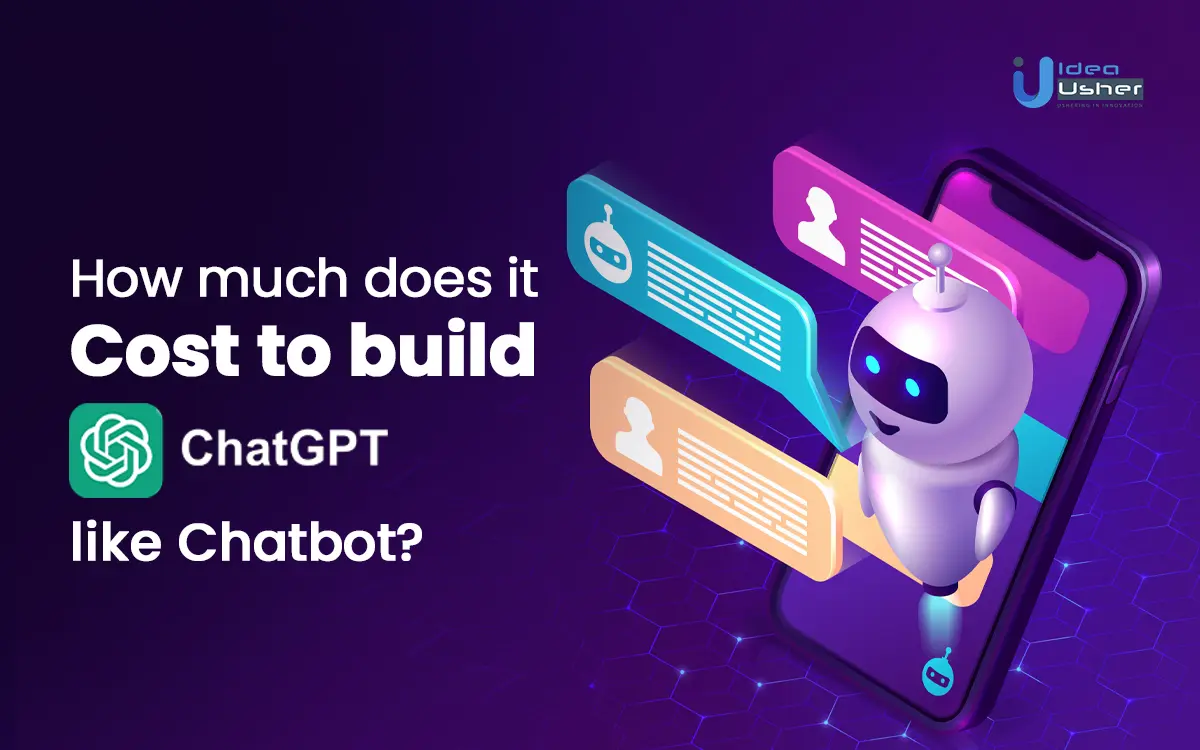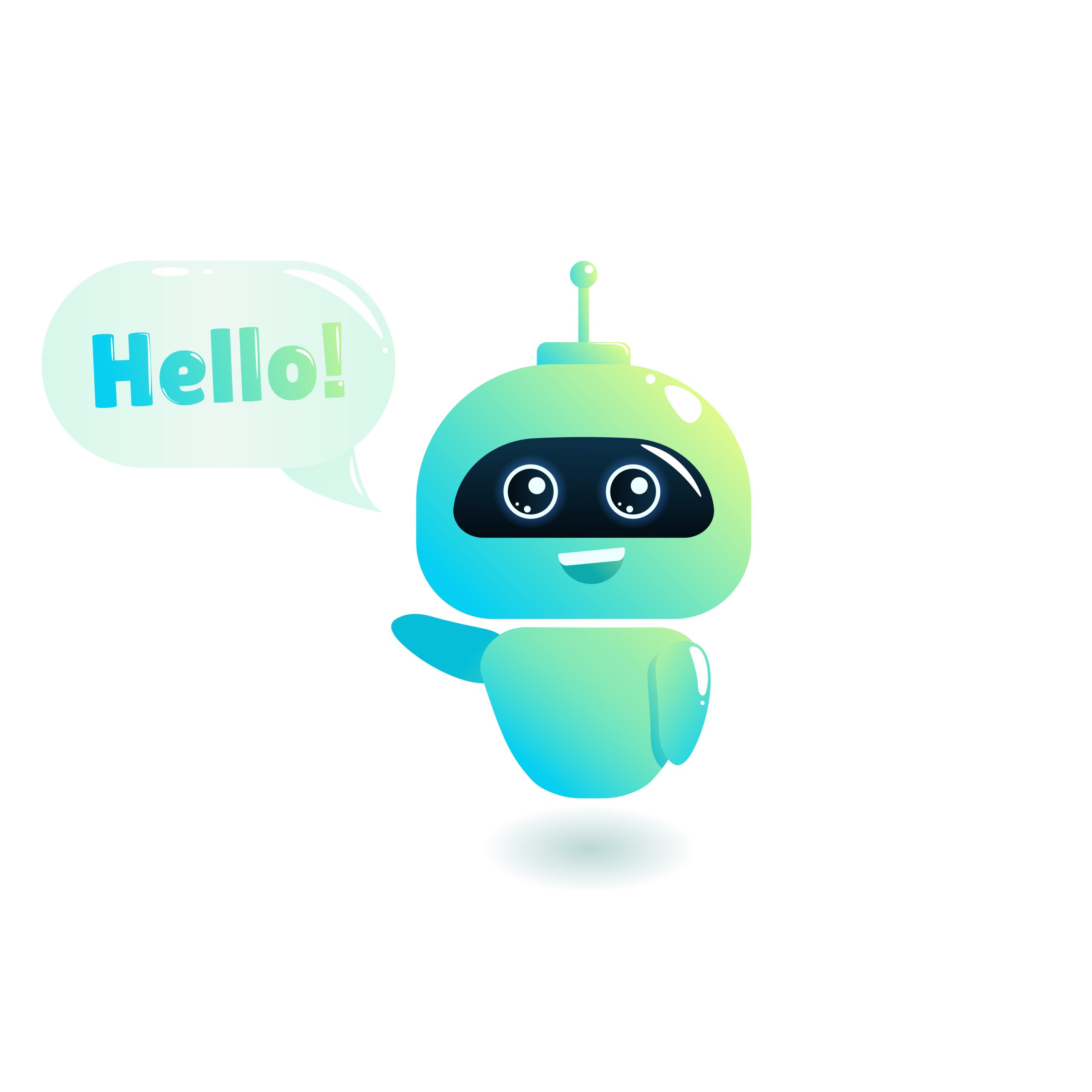ChatGPT has impacted technology since its launch in November 2022.
A chatbot developed by Open AI, ChatGPT possesses NLP capabilities to generate relevant information based on user-submit prompts.
From assisting marketers in improving their campaigns to helping programmers to write and debug codes, no industry remains untouched by the powerful impact of the ChatGPT.
As per the report, the chatbot market size was valued at $0.84B in 2022, and it is expected to reach $4.9B by 2032 at a CAGR of 19.29% between the forecasting period of 2023 to 2032.

Due to the increasing demand for automated customer service solutions and the growing popularity of conversational AI technology, building a chatbot like ChatGPT offers enormous opportunities for entrepreneurs seeking to profit from this industry.
Here are the development steps, cost estimation, and required technical stack to create your ChatGPT-like chatbot.
What Is ChatGPT?
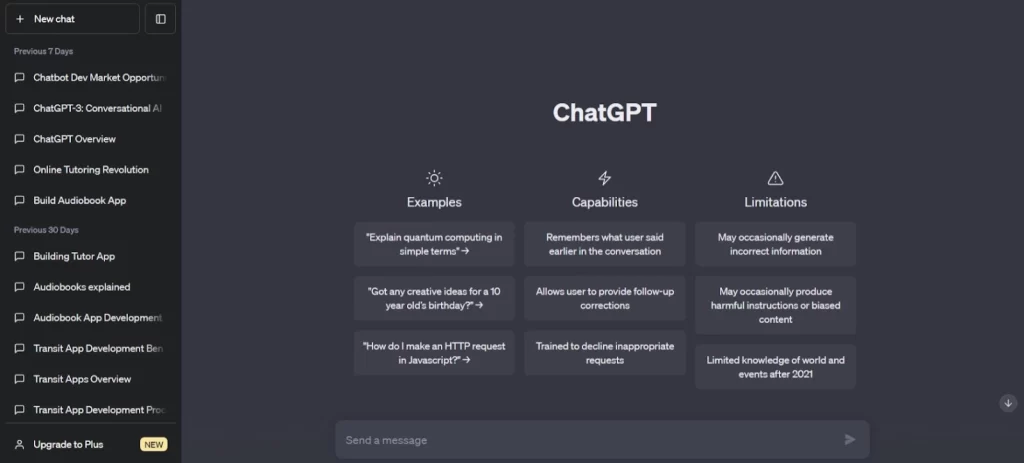
A language model developed by OpenAI (an artificial intelligence company). ChatGPT (Generative Pre Trained Transformer) is an AI-powered chatbot trained with over 45 terabytes of data to generate the most valuable sets of words.
The platform provides data or generates results in response to questions or prompts. OpenAI continuously works on this platform to improve its processing and enhance its NLP tasks, such as question-answering and translation.
ChatGPT is an improved version of GPT 3 (a family of language models) that is fine-tuned with supervised learning that involves human trainers in both the role of the user and the AI assistant.
In addition to human involvement, reinforcement learning has played a crucial role where trainers mark the responses by the language model. Moreover, OpenAI is improving its platform by collecting input from users.
| Founded in | 2022 |
| Developed by | OpenAI |
| Available on | Web |
| Headquarters | San Francisco, USA |
How Does ChatGPT Work?
The platform working is based on OpenAI’s GPT (Generative Pre-trained Transformer) architecture. GPT is a deep training model that utilizes a transformer neural network for generating responses similar to humans in a conversational context. Here is how ChatGPT works:
1. Training data
ChatGPT has trained itself on large data sets that include diverse texts from the internet. The data set helps ChatGPT improve its facts, grammar, reasoning, and abilities for writing on different topics and styles.
However, ChatGPT does not have real-time access to the internet and is limited to the data set knowledge under September 2021.
2. Interactive responses
The platform uses sampling techniques to make responses more focused and exploratory, as whenever users interact with ChatGPT, the platform tokenizes the input and generates a probability distribution over the next possible tokens.
3. Pre-training
The platform generates coherent responses using the pre-training architecture, capturing dependencies between words. ChatGPT utilizes a transformer neural network that consists of multiple layers of feedforward neural networks and self-attention mechanisms.
4. Fine-tuning
After pretraining, the fine-tuning process occurs within ChatGPT, which involves training the model on specific data with the help of humans.
The human reviewers follow guidelines provided by Open AI to rate and review the possible model outputs for various example inputs.
Top 5 Chatbots Similiar To ChatGPT
Explore the best platform with features and functionalities similar to ChatGPT.
1. Google Bard
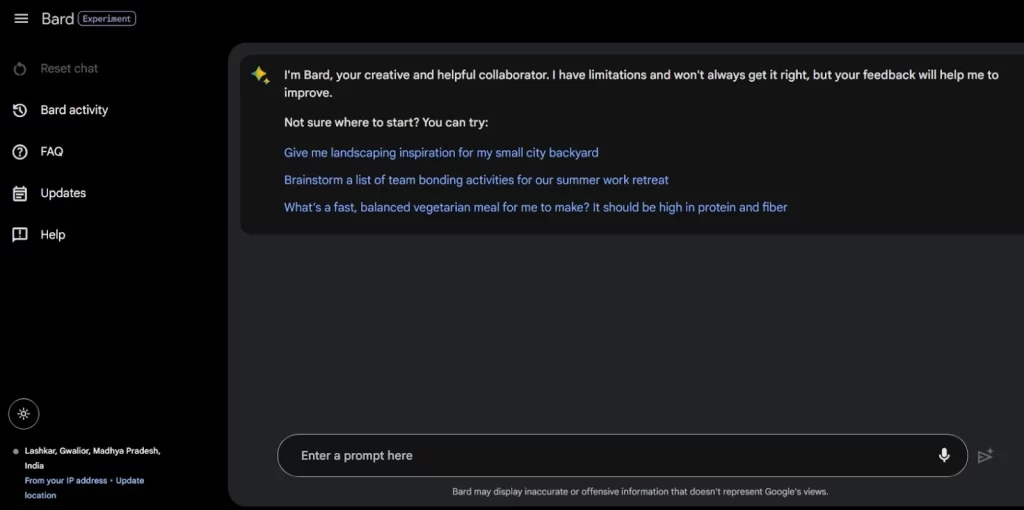
Google Bard is an experimental AI conversational service that is powered by the Google LAMBDA (Language Model for Dialogue Applications).
This chatbot is trained with trillions of words that help them predict responses and maintain a conversation.
The platform possesses up-to-date information not limited to any specific year and access to the latest language models and techniques. However, Google Bard is not conversational as ChatGPT.
| Founded in | 2023 |
| Founded by | |
| Available on | Web |
| Headquarters | California, USA |
2. Hugging Chat
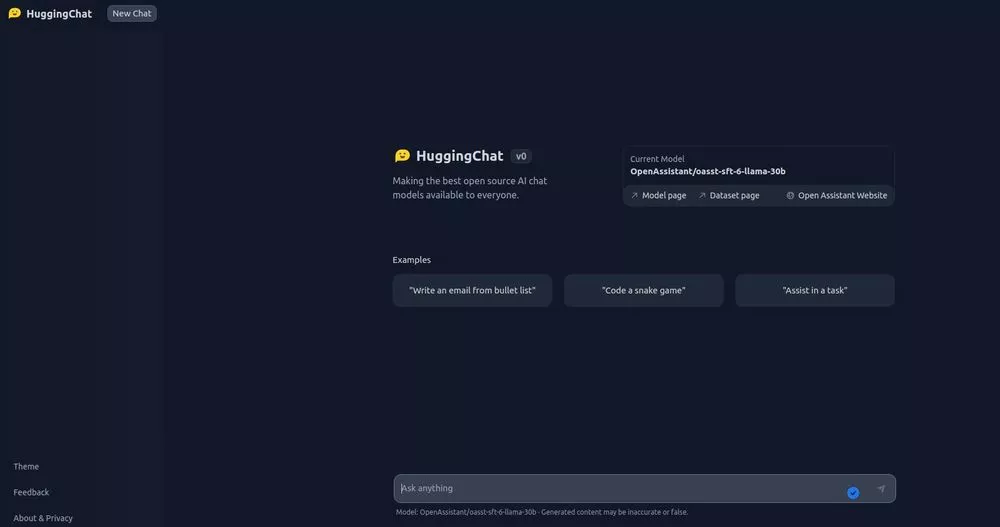
An open-source platform, developed by HuggingFace. The remarkable feature of this platform is its similarity to ChatGPT.
Hugging Chat can accurately perform most writing tasks and delivers fast outputs. However, the training data is only available until September 2021, and its coding capabilities are not as advanced as ChatGPT.
| Founded in | 2016 |
| Founded by | Clément Delangue, Julien Chaumond, and Thomas Wolf |
| Available on | Web |
| Headquarters | New York, USA |
3. Jasper.ai
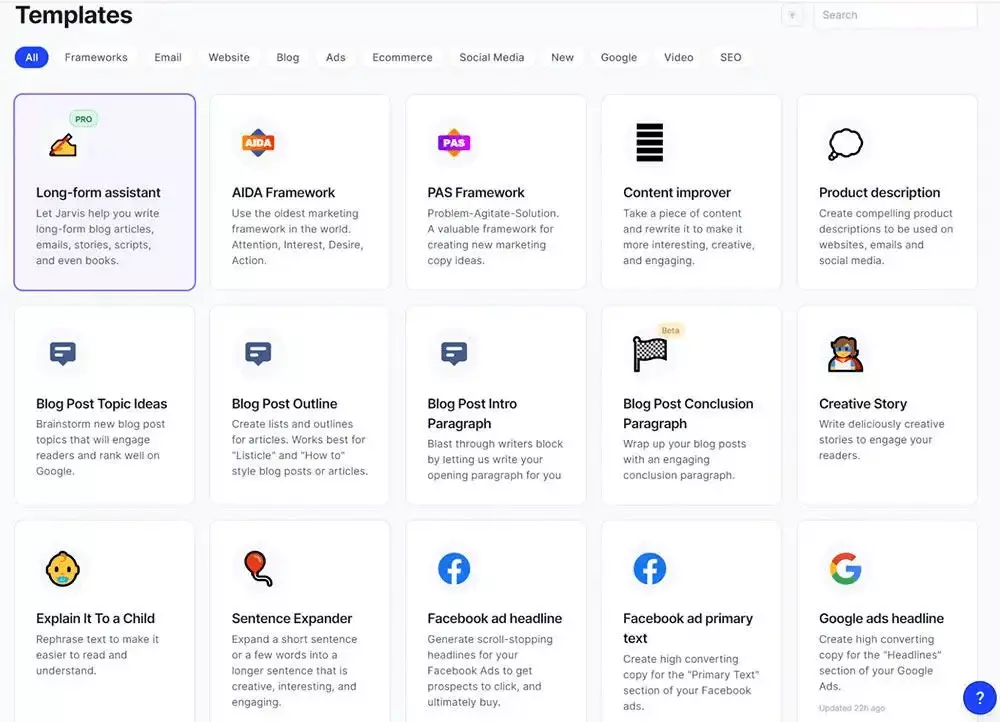
Jasper.ai is a conversational AI platform that operates on the cloud and offers powerful natural language understanding (NLU) and dialog management capabilities.
It is a conversational AI platform with powerful natural language understanding (NLU) and dialog management capabilities.
Jasper.AI, like ChatGPT, may inspire writers, support the creation of articles, and help marketing teams create compelling ad content and create graphics.
Additionally, the platform uses internal NLU models and Open’s GPT-3.5, which is particularly beneficial for jobs linked to customer care, sales, and marketing.
| Founded in | 2021 |
| Founded by | Dave Rogenmoser |
| Available on | Web |
| Headquarters | Austin |
4. Character AI

The platform provides various personalities instead of interacting with a single AI chatbot. Character AI is based on neural language models. The platform is free to use; however a bit slower than ChatGPT.
Character AI facilitates various personalities, including Tony Stark, Elon Musk, Socrates, etc. The best part of this platform depends on your chosen character; the AI changes its conversational manner accordingly.
| Founded in | 2021 |
| Founded by | Noam Shazeer and Daniel De Freita |
| Available on | Android & iOS |
| Headquarters | Menlo Park, California |
5. ChatSonic

ChatSonic is a ChatGPT alternative with factual content-creation capabilities. The platform helps its users to create content with factual, accurate information about trending topics in a real-time. The platform inherits vast potentials Of AI capabilities that are backed by broad knowledge from the data accessed throughout the internet.
The ChatSonic remembers conversations and executes them in a continuous flow. The platform also adapts characters of 16 personas, from poets to accountants and other relevant professionals.
Moreover, Chat Sonic also has a built-in image generator that creates decent images based on the prompts given by the users. The platform offers a monthly subscription plan of around $12.67 for an extended range of services.
| Founded in | 2020 |
| Founded by | Samanyou Garg |
| Available on | Android |
| Headquarters | San Francisco, California, USA |
How To Build An AI Chatbot Like ChatGPT?
Follow the given steps to build your chatbot platform:
Step 1: NLP Framework selection
Selecting a suitable NLP framework is crucial to building a ChatGPT-like AI chatbot. Multiple NLP frameworks are available such as Spacy, NLTK, and Gensim.
You can select the best one by determining each framework’s strengths and weaknesses and which would be best for your chatbot model.
Step 2: Dataset preparation
Preparing data sets is the next step towards building a chat GPT-like chatbot, where you will organize and gather your data. The data can be extracted from various resources such as social media posts, chat logs, emails, etc.
Step 3: Data Feed
Utilise several NLP frameworks and machine learning algorithms to train your chatbots, enabling them to understand natural language and generate responses based on the users’ input.
Step 4: Fine-Tuning
Fine-tuning parameters and training on specific topics is the next step you need to take to develop your AI chatbot. Add additional training data to your chatbot to help them to learn about a particular topic.
Step 5: UI Integration
A simple and engaging UI enables users to access your ChatGPT-like platform easily. A user interface can be integrated into a chatbot using API or SDK provided by the NLP framework, ensuring a higher satisfaction rate and better customer experience.
Technical Stack To Develop Chatbot Like ChatGPT
Partnering with a reliable app development company is the best way to select the appropriate tech stack to develop a chatbot like ChatGPT.
However, the recommended technical stack for building a chatbot is as follows.
| Application and data | Firebase, Swift, Kotlin Cloudinary, Realm |
| Utilities | Google Analytics, XCTest |
| Analytics and Human takeover | Dashbot, Chatfuel |
| DevOps | Crashlytics GitHub, Xcode, Fabric by Twitter. |
| Business tools | Sketch, Gmail, Sumerian, Invision, SwiftLint. |
| Node JS framework | Botpress |
| Natural Language Processing | Recast.AI, Nuance MIX, IBM Watson, Microsoft Luis |
| Neural Networks | CNN, RNN, Representation learning, Manifold learning, Variational autoencoders, Bayesian networks, Autoregressive networks |
| Messaging Interface | FbMessenger |
| Algorithms | Supervised/unsupervised learning, Clustering (density-based Hierarchical, partitioning), Metric learning,Few-shot learning |
| Libraries | OpenNN, Neuroph, Sonnet, Tensorlfow, Tensor2Tensor, tf-slim |
| Modules/Toolkit | Microsoft Cognitive Toolkit, Core ML, Kurento’s computer vision module |
| DL Frameworks | PyTorch ,MXNet, Nvidia Caffe,Caffe2, Chainer, Theano |
How Much Does It Cost To Build A Platform Like ChatGPT?
Several factors can influence the development cost of a chatbot. Here are some key factors to consider:
1. Complexity of functionality
The complexity of chatbot functionality plays a crucial role in determining the development cost. Simple chatbot functionalities, such as answering simple queries or providing predefined responses, require less development cost and may require less budget.
However, in the case of developing complex and advanced AI chatbot functionalities such as machine learning and natural language processing, you may need to extend the budget of chatbot development.
2. Natural language processing (NLP) capabilities
The NLP will enable your chatbot to understand and respond to natural language inputs. However, building and fine-tuning NLP models may be time-consuming, need specialized expertise, and can impact the overall development budget.
3. Platform and deployment considerations
The platform selected for chatbot deployment is another factor that affects the cost of developing a chatbot. Developing a chatbot for a single platform, such as a mobile app, website, or messaging platform, is less expensive than simultaneously deploying them across multiple platforms.
Other factors like scalability, hosting, and maintenance costs should also be considered when developing a chatbot.
4. Development resources and expertise
The availability of skilled developers, such as data scientists and designers, is another factor determining the development cost of your AI chatbot. Based on their level of expertise, the budget may extend further. However, it would give the best results for the output of your project.
5. Design and user experience (UX)
The user interface will enable users to interact with your platform. Therefore, investing in a simple and user-friendly UI Design is a must for developing your ChatGPT-like platform to enhance user satisfaction and experience on your chatbot platform.
6. Maintenance and updates
The chatbot development involves ongoing maintenance and upgradation, such as adding new features and eliminating technical bugs and issues throughout the platform.
Therefore, considering long-term maintenance and supporting costs is crucial when calculating the overall development cost of chatbot platforms.
7. Integration with backend systems
The back-end integration with the chatbot platform will make it fully functional and ready to use. Consider integrating your platform into back-end systems such as customer relationship management, e-commerce platforms, or other third-party APIs.
Other backend processes, such as data synchronization, ensure seamless communication between the back-end system and chatbots.
Therefore Integrating your platform into the back-end system is another factor that will determine the cost of developing your chatbot platform.
8. Customization and personalization
Personalization and customization are other factors that impact the app development cost. Meeting specific requirements and business needs may further extend the app development budget.
Therefore, accessing specific requirements and goals to estimate the app development cost becomes crucial. Working with a reliable AI development firm experienced in developing a chatbot is the best way to estimate the development budget accurately.
Here is the detailed guide to hiring AI developers in 2023.
Conclusion
The development of chatbots has revolutionized human-machine interaction by extending the boundaries of Natural language processing.
With the impressive capabilities of generating text based on user input, there is a wide scope to enter this profitable market with an exclusive chatbot development.
You can expand your chatbot business to a wide range of industries by harnessing AI capabilities and developing an optimized chatbot.
Partner with a reliable AI development company, such as Idea Usher, that can help you understand your project needs and figure out the exact solution to build and deploy your chatbot platform to your target market.
Our team will work with your team and project to deliver the best solutions for your business and project needs.
Contact Idea Usher
Work with Ex-MAANG developers to build next-gen apps schedule your consultation now
Email:
Phone:
(+1)732 962 4560
(+91)859 140 7140
FAQ
Q. How much did GPT-3 cost?
A. According to OpenAI, the development cost for building GPT-3 was rounded around $4.6M.
Q: How much does it cost to develop an app like ChatGPT?
A. Several factors can determine the cost of developing an app like ChatGPT, such as their natural language processing capabilities, platform and deployment consideration, the complexity of functionality, design and user experience, development resource and expertise, maintenance and updates, integration with a back-end system, the level of customization and personalization, etc.
Q. How long does it take to develop an AI chatbot?
A. The development time depends on various factors, such as the complexity of features, the selected methodology for chatbot development, and much more.
